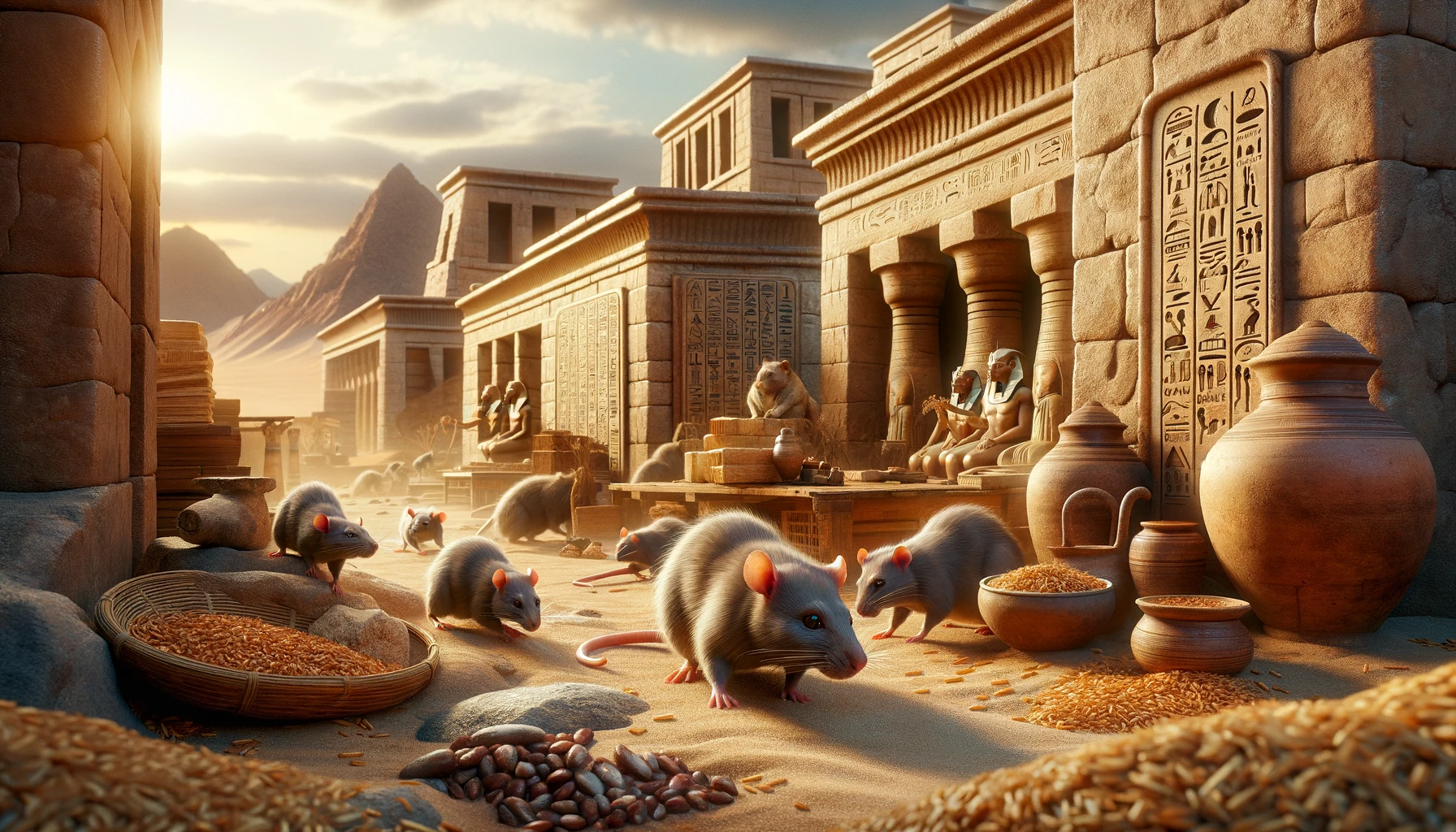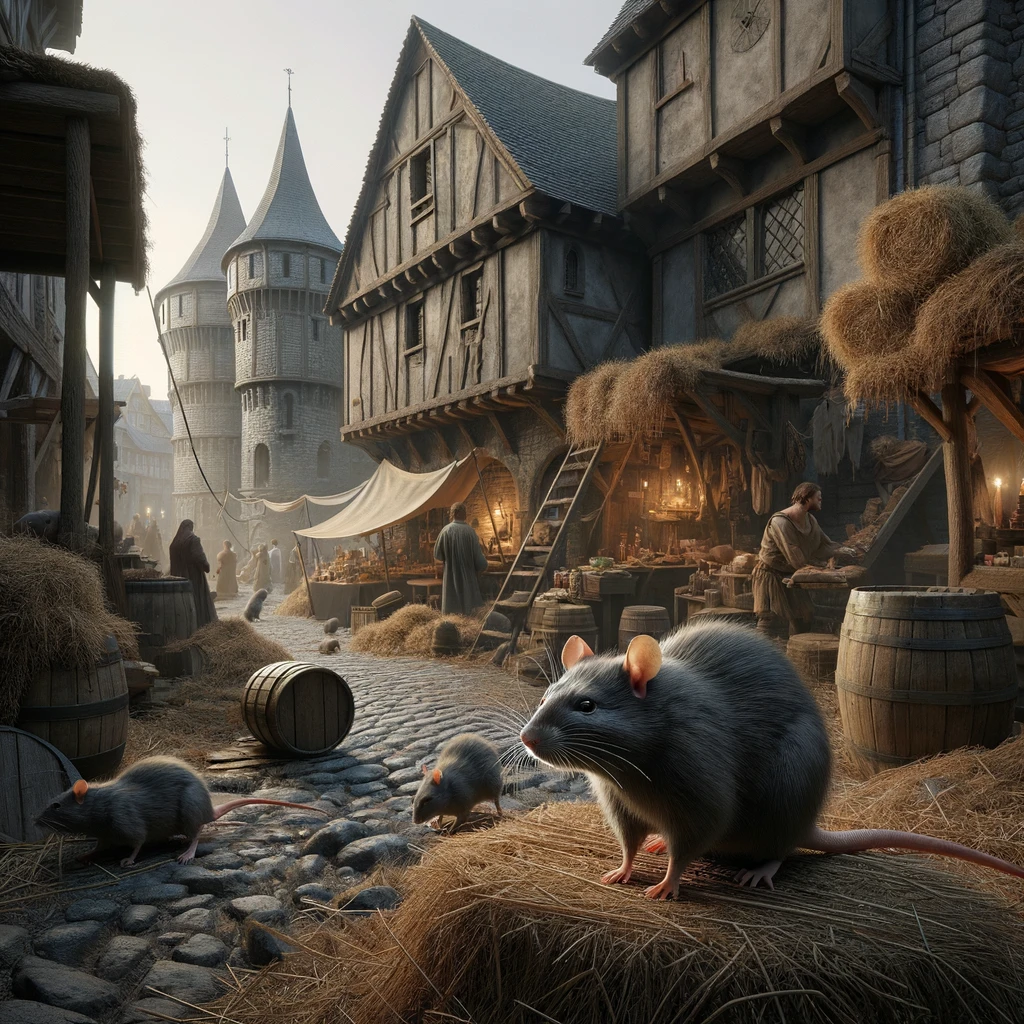
Rodents have always been a common nuisance for humanity, and throughout history, people have devised various methods to control their populations. From ancient times to the modern era, pest control techniques have evolved significantly. In this article, we will delve into the fascinating history of rodent control and uncover the ancient methods employed by our predecessors.
Ancient civilizations faced their fair share of rodent infestations and developed innovative techniques to combat these pests. The ingenuity of our ancestors is evident in the methods they employed to protect their homes and crops.

One prevalent method used in ancient times was rodent trapping. Early civilizations, such as the Egyptians and Romans, constructed traps made from various materials such as woven baskets or wooden contraptions. These traps offered a simple yet effective means of capturing and removing rodents from homes and storage areas.
But the ancient world had more than just traps up its sleeve. In some regions, people used a technique called "smoke fumigation" to combat rodent infestations. They would burn specific herbs or plants known for their strong scent, creating a dense smoke that would drive the rodents away. This method not only helped in getting rid of the pests but also added a mystical element to the pest control practices of the time.
Additionally, ancient societies relied on the assistance of animals to control rodent populations. Cats, in particular, were revered for their ability to hunt and catch mice and rats. Ancient Egyptians worshipped cats as guardians against various pests, including rodents. Their presence not only helped deter rodents but also provided companionship to the people.
As civilizations grew and agricultural practices developed, farmers faced challenges in protecting their crops from rodent damage. Ancient farming communities employed diverse pest management strategies to safeguard their harvests.
One prevalent technique was companion planting. Farmers observed that certain plants emitted scents that repelled rodents, minimizing crop damage. By strategically planting these repellent plants alongside their crops, farmers could deter rodents without resorting to harmful measures.
But companion planting wasn't the only method used by ancient farmers. In some parts of the world, farmers would create barriers made of thorny bushes or plants with prickly leaves around their fields. These natural barriers not only prevented larger animals from entering the fields but also acted as a deterrent for rodents, keeping them away from the precious crops.
The use of natural predators also played a crucial role in ancient pest control. For example, in China, farmers harnessed the power of ducks to control rice field pests, including rodents. These water-loving birds fed on insects and small mammals, effectively reducing the rodent population without the need for pesticides.
The Middle Ages brought new challenges in the battle against rodents. With the rise of urbanization and the proliferation of rat-infested cities, medieval societies had to develop new methods to combat these pests.

During the medieval era, rats thrived in unsanitary urban environments. To combat these infestations, people employed various techniques, including the use of cats as rat catchers. Cats were frequently employed in homes, shops, and even monasteries to hunt and control the rodent population.
Rat traps also became more sophisticated during this period. Contraptions made from metal, such as spring-loaded traps, were invented and widely used to ensnare rats. These traps were highly effective and played a vital role in reducing rat numbers in densely populated areas.
Aside from cats and traps, another method used in medieval times to combat rats was the employment of ferrets. These small, agile mammals were trained to chase rats out of their hiding spots, making them easier targets for eradication. Ferrets were particularly useful in rural areas and farms where rats posed a threat to crops and stored food supplies.
Furthermore, some medieval communities resorted to the use of herbal remedies to deter rats. Plants such as mint, lavender, and wormwood were believed to repel rodents due to their strong scents. People would hang bundles of these herbs in their homes or sprinkle them in infested areas to discourage rats from taking up residence.
As societies progressed, so did their pest control practices. The transition from ancient to modern times witnessed significant advancements in pest management techniques, with a particular focus on the use of pesticides.
In the 19th century, the discovery of chemical compounds with insecticidal properties revolutionized pest control. Substances such as copper sulfate and pyrethrum were used to combat various pests, including rodents. These early pesticides offered more efficient and targeted pest control compared to traditional methods.
Let's delve deeper into the fascinating world of 19th-century pest control. Picture a bustling farm, with farmers toiling under the scorching sun, determined to protect their crops from the relentless onslaught of pests. Armed with newfound knowledge and chemical pesticides, these farmers embarked on a journey to safeguard their livelihoods.
They carefully measured out the right amount of copper sulfate, mixing it with water to create a potent solution. With precision and skill, they sprayed the mixture onto their crops, effectively eliminating pests that threatened to devour their hard work. The sight of pests retreating in the face of these powerful chemicals brought a sense of relief and triumph to the farmers.
However, the unregulated use of pesticides in agriculture soon led to unintended consequences. The overuse and misuse of these chemicals resulted in environmental damage and health risks for both humans and animals. It became evident that a more cautious and balanced approach was necessary to protect the ecosystem while effectively controlling pests.
The advent of chemical pesticides brought numerous benefits, including increased crop yields and reduced pest damage. Farmers worldwide embraced these new technologies as they offered a solution to the persistent threat of rodents in agriculture.
Imagine the joy and relief that swept through farming communities as they witnessed their crops flourishing, free from the devastating effects of pests. The once barren fields now teemed with life, promising bountiful harvests and economic prosperity.
However, the long-term consequences of pesticide use soon became apparent. Contamination of water sources, decline in beneficial insect populations, and the emergence of pesticide-resistant pests were among the issues that arose from excessive pesticide application.
As the years went by, scientists and researchers recognized the need for a more sustainable approach to pest control. They began exploring alternative methods such as integrated pest management, which aimed to minimize pesticide use while maximizing the effectiveness of other pest control strategies.
Today, we stand at the crossroads of pest control history, armed with knowledge and a growing awareness of the delicate balance between pest management and environmental preservation. The evolution of pest control continues, driven by the quest for innovative and sustainable solutions that protect both our crops and our planet.
Over the years, scientists and researchers have worked tirelessly to develop safer and more environmentally-friendly pesticides. The modern era has witnessed the introduction of integrated pest management (IPM) strategies that prioritize prevention, monitoring, and targeted intervention.
IPM approaches aim to minimize reliance on chemical pesticides by implementing alternative methods such as biological control, crop rotation, and habitat manipulation. By understanding the ecological relationships between pests, their predators, and the environment, pest control can be achieved in a sustainable and effective manner.
In addition to biological control methods, another innovative approach in modern pest management is the use of pheromones. Pheromones are chemical signals that insects use to communicate with each other for mating, marking territories, and warning of danger. By synthesizing these pheromones, scientists have been able to disrupt insect mating patterns, leading to a decrease in pest populations without the need for traditional pesticides.
Furthermore, advancements in technology have also played a significant role in revolutionizing pest control. Drones equipped with infrared cameras are now being used to survey agricultural fields and identify pest hotspots with precision. This targeted approach allows for the application of pesticides only where needed, reducing overall chemical usage and minimizing environmental impact.
In conclusion, the history of rodent control is a testament to human ingenuity and our ever-evolving approach to managing pests. From ancient trapping techniques to the use of predators and the development of chemical pesticides, our methods have continuously evolved to strike a balance between pest eradication and environmental conservation. By learning from the past, we can continue to refine our pest control practices and ensure a harmonious coexistence with the creatures that share our world.